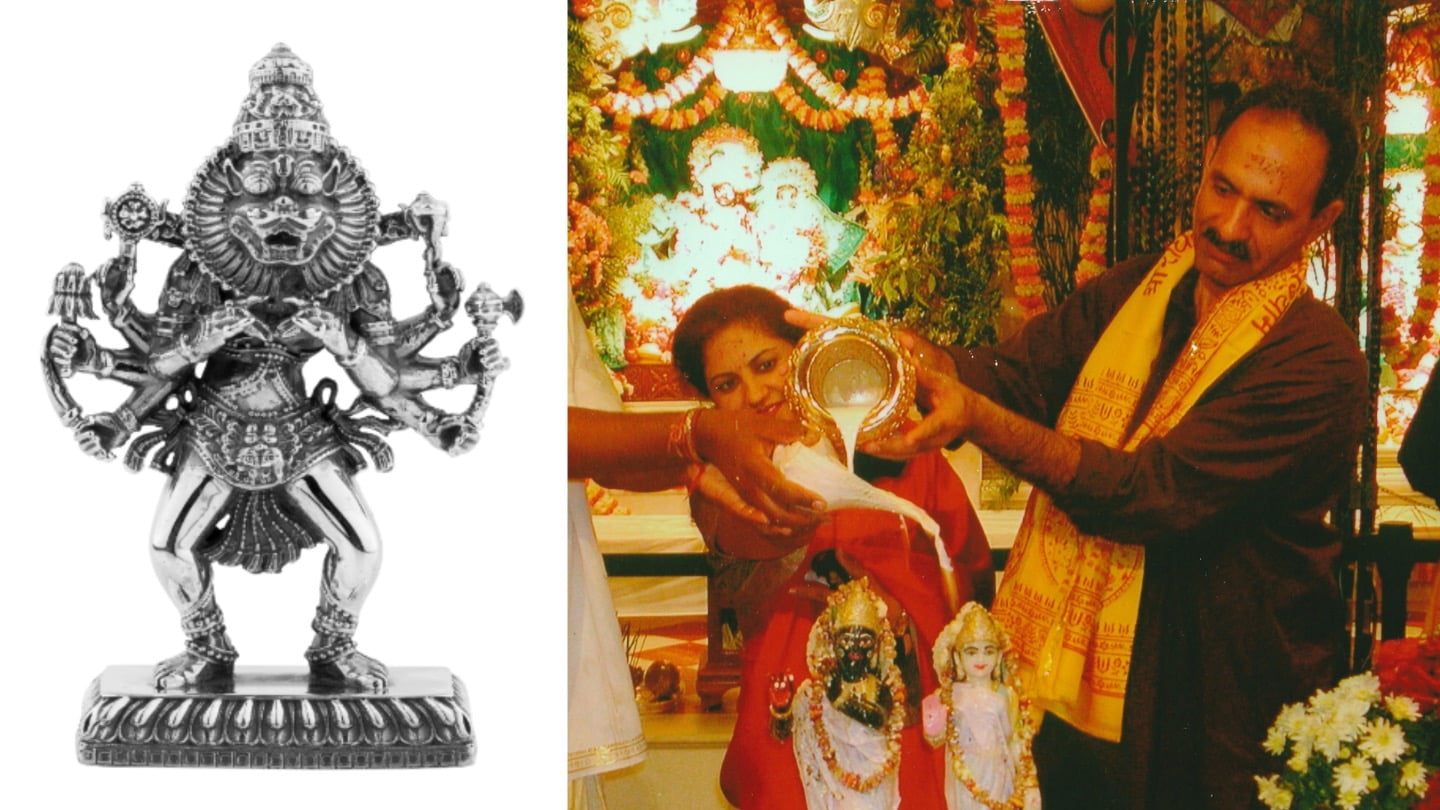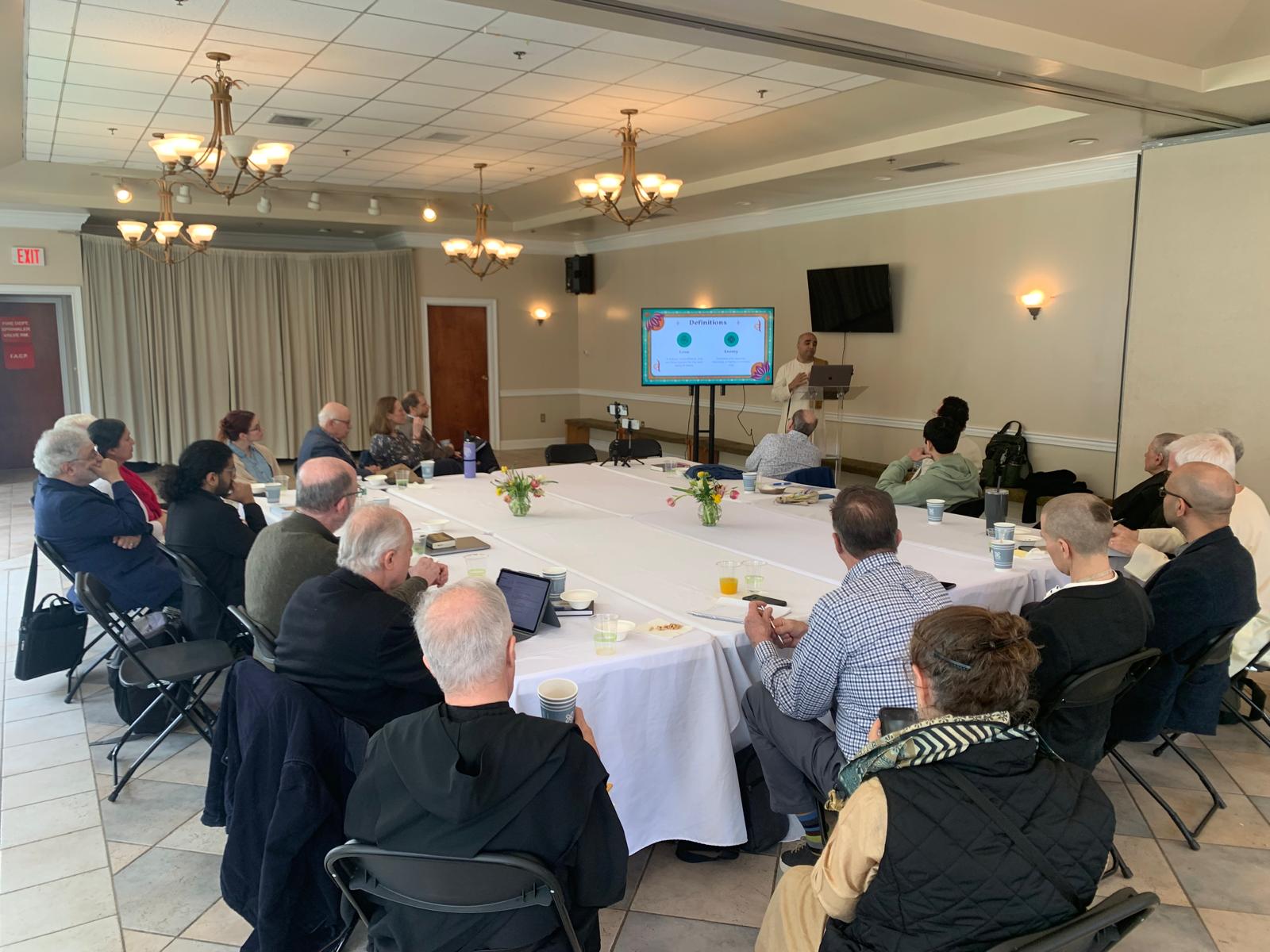Having the Eyes to See
By Kripamoya Das | May 19, 2017

A lone eagle soars high in the sky above the craggy foothills of the Himalayas, wheeling and gliding on the thermal currents. Her golden-brown wings, extending to a gloriously feathered span of five feet, catch every breeze.
At times she seems to hover, so perfectly balanced are the calculations of her own forward movement and the counter-thrust she feels from the wind. Deep below her, over a mile away on the slopes, a small rabbit ventures out of its burrow. It’s just a grey speck in a greyish landscape but she sees it. Making a large circle so as to descend behind her prey, she calculates the distance, her own speed, and the speed of the rabbit, then plunges quickly down and forward. The rabbit has no chance.
Just one scene that plays out every day in nature, but one which reveals how every species has a particular advantage in the struggle for survival. If you and I had the eyes of that eagle, we’d be able to see an ant from the tenth floor of a skyscraper. Eagles have such acute vision because they’re endowed with retinas that have a dense coating of light-detecting cells known as cones. Humans have around 200,000 cones per millimetre whereas eagles have 1,000,000, five times the amount. Like pixels in an image, the more cones, the clearer the picture and the further you can see. The part of the retina known as the fovea – in humans a one millimetre sized dip – is the part where vision is most acute. In an eagle the fovea is a much larger convex pit. They also see in bright colour, as well as in ultraviolet. Not only that, but because of the positioning of their eyes, they can see 340 degrees to our 180. Life is not all about being able to catch rabbits, but if you’re an eagle it is very useful.
The basic impulse of all life is to stay alive, and each species has some special sensory advantage that contributes to its fight for survival. Moths can smell other moths over a mile away, and a fish can hear over huge distances through the water. Even the humble housefly can walk upside down using sticker pads on its feet, and an earthworm can completely regenerate its own body. By comparison, we humans have strict limitations on our senses. We have greatly increased problem-solving intelligence, but our eyes, noses and ears are not the greatest in the natural world.
We tend to consider reality to be only that which we can see, smell and hear; but compared to other creatures we really don’t experience much of ‘reality’ at all. What is reality anyway? If we can only experience directly a very small portion of the electromagnetic spectrum – not even including ultra-violet and infra-red light – then does it mean that anything beyond what we can see is not real? The little rabbit was ‘real’ for the eagle, but any humans flying at that height would have missed it entirely. It would not have been ‘real’ for them.
That’s why eastern spiritual teachings begin with the principle that the five senses alone are insufficient to experience spiritual reality – if indeed there is any such thing as a spiritual reality beyond the physical world. The plane of spiritual existence cannot be proven by any sensory evidence – but neither can it be disproved. The Sanskrit word for ‘proof’ is pramana, and the closely related word for ‘evidence’ is pramanya. When one is able to provide evidence then one has proof that something is real, or that something really happened. The senses cannot provide this proof, hence the logical conclusion that sensory pramana is not good enough for understanding spiritual reality.
The next type of proof often comes from a logical deduction based on gathered evidence. It is known as anuman or ‘deduction.’ You did not see the eagle catch the rabbit, but you know that eagles do catch rabbits, and you’ve just seen an eagle eating what looks like a rabbit. From this you deduce that the eagle caught the rabbit.

But anuman can also be as unreliable as pratyaksha or direct sense perception. After all, it depends on sense perception followed by a logical deduction. For instance, you see smoke on a mountain and become fearful that there is a forest fire. Although it is true that there are many forest fires on that particular mountain close to your wooden home, and although it is true that last year the fire was so large that your house was threatened, you cannot conclude that it is indeed a forest fire. It may be a controlled fire from a mountaineers’ breakfast camp. You don’t know. Still the apprehension comes based on faulty deduction. Your pratyaksha was without fault – ‘there is smoke’ – but your anuman was faulty – ‘there is smoke again on the mountain, therefore it is a forest fire.’
The third method of gathering evidence or pramana is through shabda, or ‘authoritative knowledge,’ the speech of an expert eye-witness or knowledgeable person. When that person tells you: “No, I actually fed the already-dead rabbit to that eagle. I’m a zoo-keeper and I was trying to lure the eagle back to the zoo…” Or when a stranger on the telephone informs you: “No, please don’t worry about a forest fire, I’m the leader of the mountain rescue team and we’ve been having a training camp up on the mountain. We’re just finishing breakfast right now. I’ll make sure the fire is out before we leave.”
But since sense perception is faulty, and since even eye-witnesses and experts get it completely wrong, and since such knowledge tends to get compounded and then presented as truth, we are often left disappointed and looking for a fresh source of conclusive evidence. When finding our way to a house in an unfamiliar town we can take the risk of asking any strangers, but when our safety, prosperity, health, happiness is at stake we need the best possible opinions. And when the destiny of our life is the question, the ‘expert opinion’ must be absolutely reliable.
So in Vedic culture the ultimate shabda or authoritative knowledge is the Vedas. The Vedas are also known as shabda, and it is considered that the Vedas are the final word on reality or tattva, the truth free from imperfect sense perception, faulty deduction, and fallible experts.
This does not sit well with empirical scientists and philosophers. That an intelligent person can rely on a source of information whose validity cannot be immediately proven by direct sensory experience, experimentation or collected research, even the idea is a very strange one indeed. But that is the Vedic model, and is held to be particularly pertinent to discovering the nature of the transcendent, by definition that which is beyond the scope of the physical senses.














